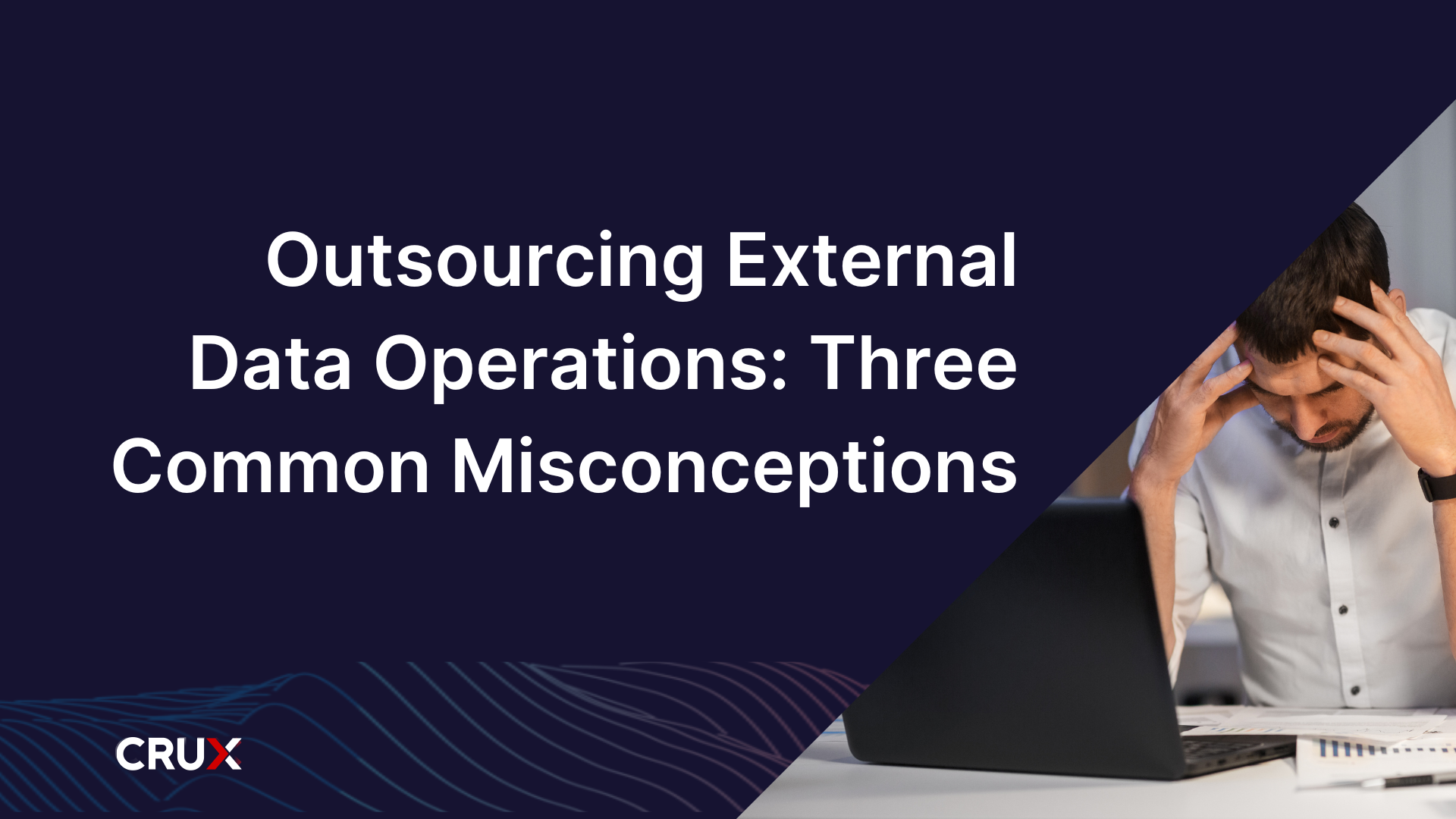What Cloud Marketplaces Do and Don’t Do
Not long ago, we observed here in our blog that the critical insights that drive business value come from data that is both (1) fast and (2) reliable.
4 min read
![]() Derek Grubbs
Feb 23, 2023
Derek Grubbs
Feb 23, 2023

Managed services can be a data engineer’s best friend. Here’s what they don’t know–but should–about utilizing these services.
External data integration services, like any other technology service, can be seen as a threat to engineers, scientists, or anyone using them as job-replacing technology. But the reality is that most of these tools are built to support engineering. This is done by helping them offload the mundane, time-consuming work that requires less of their skills–not by replacing critical engineers that support many aspects of the business.
The idea that managed services replace–instead of help–data engineers is a common misconception. This leads to several misconceptions about what managed services provide for data engineers and how they can help. Understanding these misconceptions is critical if your team wants to level up its external data integration.
It’s also important to acknowledge that these misconceptions are rooted in valid concerns that data engineers have seen throughout their careers. Those concerns still have an essential role when evaluating a managed service for external data integration.
This is where managed services get a bad rap. Managed services for external data integration supplement the existing engineering team to help remove the backlog of datasets, leverage machine learning to offload repetitive tasks, and tap into a platform built to scale as your needs require.
The intent of managed services is not to replace data engineers; it’s to make their jobs easier. Whether you have a team of one or a team of 100, there is a tech stack supporting them in their role. Any service or product a team invests in should reduce their workload or time spent completing tasks to increase productivity, not replace them. In most organizations, data engineers spend 80% of their time preparing data and only 20% analyzing and utilizing it. Ideally, this would be reversed, and managed services help your team move toward that goal.
Every dataset requires resources to maintain and troubleshoot when issues arise. If your team is resource-constrained, any time a new dataset is onboarded or a new team within your organization needs data, the workload increases, and so does the backlog. To keep up with demand, you have two choices: increase headcount or buy supplemental resources to keep up.
Hiring new people isn’t always the fiscally responsible choice over time. Datasets and external data use cases are growing exponentially every day, but there’s no promise your company will grow as quickly to keep up with the salary demands. Instead, focusing on investing in tools and services that make your current staff more efficient and happier is the best and more stable long-term solution.
However, just like your data engineers likely tell you, be wary of solutions that promise everything. Data engineers and scientists have complex, analytical jobs that require deductive reasoning skills technology doesn’t quite have (yet). Any technology seeking to replace your engineers is most likely too good to be true. And who wants to use a tool designed to replace them anyway?
It’s great when teams have already developed solutions for the datasets being consumed by their business today. An organization’s external data maturity is critical for determining what level of service and support we suggest for our customers. But just like anything else in a business, maturity is subject to change.
Job scope and data schemas are always in flux, so any time your data engineering team faces a change, consider how much manpower it took you to get those current datasets in place and ask questions like:
Additionally, the marketplace for external data is anything but static. The volume of data in the world grows exponentially, and constantly. Without a process in place that scales with volume, it doesn’t matter what’s already in place, because those solutions may not apply to what’s new and now, and by the time it’s ready for consumption there’s another source that’s cropped up as business critical. This cyclical process can quickly consume your entire team with data pipeline management and very quickly dilute any high-value analytics being derived from external sources, which is the reason they’re used in the first place.
What is important to take away from this misconception is that you must determine precisely what a managed service is offering. Ask about what datasets they have available, how long it takes to onboard them, and what the process looks like to connect to a source they’ve never used previously. Data engineers are right to be cautious about repeating the same work twice, so critically evaluating exactly how this is different from any current solution will keep your team–and your budget–on the same page.
It doesn’t matter what your line of business is–your organization has to prioritize some projects and goals over others. And just like everyone else, external data service companies are staffed by people, not robots, and also have to overcome budget and scaling challenges like anyone else.
But the difference is two-fold: experience and technology. External data use cases persist across industries. Odds are, they’ve seen whatever challenge you’re facing, know of the dataset you’re considering, or even better yet–have already solved and onboarded them. So while yes, everyone is human and subject to the same volatile market, practice makes perfect.
Data engineers and scientists are experts in your business, and a managed external data service can keep it that way. The managed service providers should be experts in external data, and blending those two areas of expertise is where the magic happens. At no point should resources on either side be doing the same thing, and when that happens, this misconception can become an unfortunate reality. By hiring a managed service provider to take over a specific role on your data engineering team, everyone can focus on their niche and improve productivity overall.
When it comes to Crux, we have spent years building technology that allows data engineering teams to scale. Crux uses proprietary algorithms, products, and processes to build for scale. A new dataset onboarded doesn’t mean derailing your data engineering team for 30-90 days. In some cases, we can reduce that time to minutes because we’ve onboarded over 25,000 pipelines from over 265+ data suppliers. We know external data is fluid and our technology platform and services support those ebbs and flows in a way that maintains resilience in a changing world, while simultaneously empowering your data engineers to do more.
If you have other objections you’d like to talk through or are interested in exploring these more, you can reach out to us here.

Director of Sales Development at Crux.

Not long ago, we observed here in our blog that the critical insights that drive business value come from data that is both (1) fast and (2) reliable.

This past year has been exciting, representing the dawning of a new age for artificial intelligence (AI) and machine learning (ML)—with large...

How do you get white-glove customer service from a major data supplier?